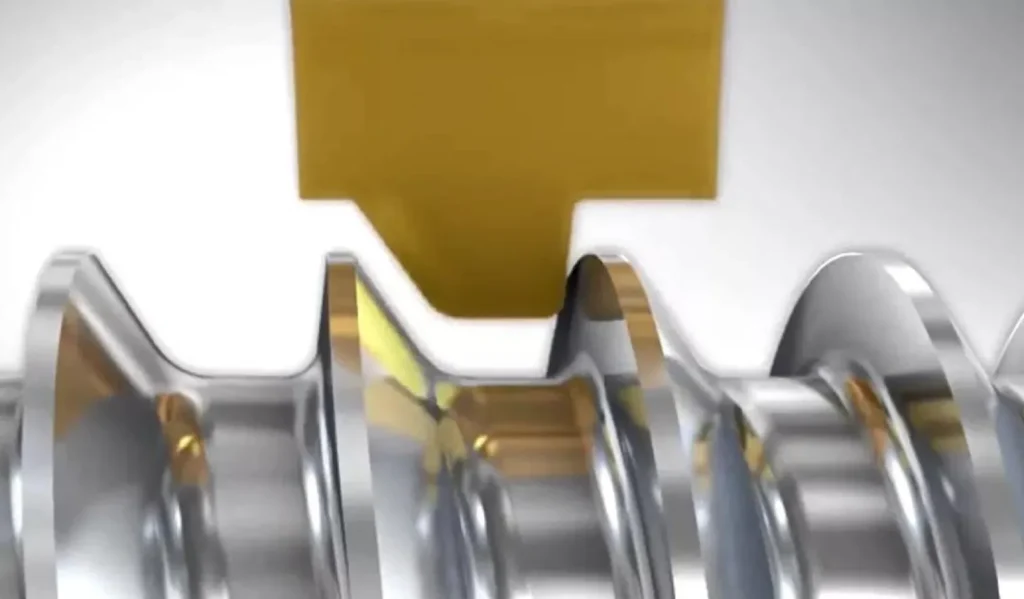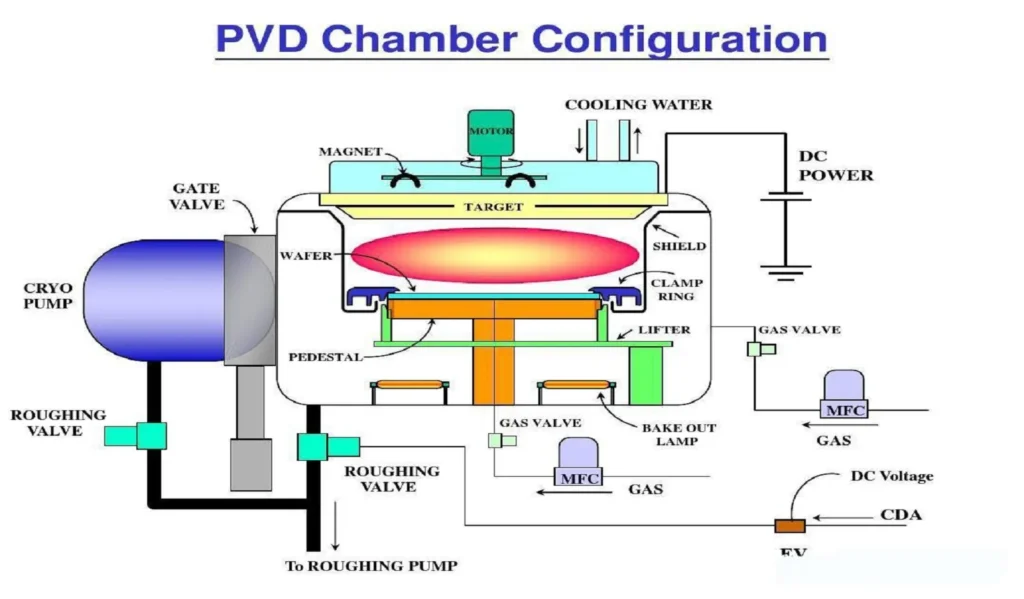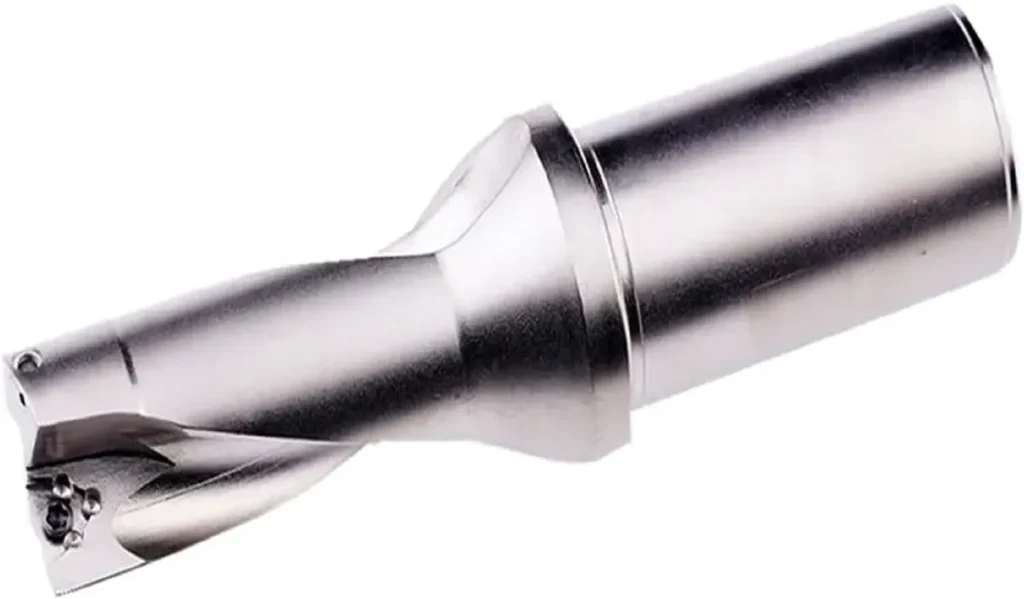선반 양식 도구 살펴보기
선반 성형 공구는 주로 재료를 정확하고 효율적으로 성형하는 능력으로 인해 금속 가공 산업에서 필수적인 구성 요소입니다. 이러한 도구는 복잡한 기하학적 프로파일과 정밀한 절단을 생성하도록 특별히 설계되어 가공 공정의 생산성과 품질을 향상시킵니다.

- 정확성 및 일관성: 선반 금형 공구는 엄격한 산업 표준을 충족하고 완제품의 신뢰성을 보장하는 데 중요한 매우 정밀하고 일관된 형상을 생산할 수 있게 해줍니다.
- 효율성 향상: 여러 번의 공구 교환 필요성을 줄이고 가공 시간을 최소화하여 운영 효율성을 크게 향상시킵니다. 프로세스를 간소화하고 생산 주기를 단축할 수 있습니다.
- 다용도성: 이 도구는 부드러운 금속부터 단단한 합금까지 다양한 재료를 다루도록 맞춤 설정할 수 있습니다. 이러한 적응성 덕분에 여러 분야의 다양한 애플리케이션에 적합합니다.
금속 가공 산업에서의 역할:
- 자동차 제조: 선반 성형 도구는 엔진 부품, 샤프트, 기어와 같은 부품을 고정밀로 생산하여 차량의 기능과 내구성을 보장하는 데 사용됩니다.
- 항공우주 공학: 업계에서는 안전과 성능을 위해 정확한 사양을 갖춘 부품을 요구합니다. 성형 도구는 터빈 블레이드 및 구조용 피팅과 같은 부품을 필요한 정확도로 제작하는 데 도움이 됩니다.
- 일반 제조: 기계의 복잡한 부품 생산부터 소비재를 위한 맞춤형 부품 제작에 이르기까지 다양한 제조 공정에서 중요한 역할을 하는 도구입니다.
선반 양식 도구의 정의 및 유형

선반 양식 도구 은 선반에서 재료, 특히 금속을 특정 기하학적 프로파일로 성형하고 절단하는 데 사용되는 특수 절삭 공구입니다. 일반적으로 원형 또는 원통형 모양을 만드는 표준 절삭 공구와 달리, 형상 공구는 한 번에 더 복잡한 윤곽을 만들 수 있도록 설계되었습니다. 이러한 고유한 기능 덕분에 일관성과 효율성이 중요한 정밀 가공 공정에서 없어서는 안 될 필수 요소입니다.
정의:
선반 성형 공구는 공작물과 접촉하여 재료를 제거하여 특정 모양이나 프로파일을 형성하는 단일 포인트 절삭 공구로 정의됩니다. 공구의 절삭 날 디자인은 원하는 최종 제품의 단면과 직접적으로 일치합니다.
선반 양식 도구의 유형:
- 고속철(HSS) 폼 도구:
고속 강철로 제작된 이 공구는 고온을 견딜 수 있어 절단 속도가 더 빠릅니다. 견고하고 마모에 강하기 때문에 널리 사용됩니다.
- 카바이드 양식 도구:
텅스텐 카바이드로 구성된 이 공구는 뛰어난 경도를 제공하며 고온에서도 날카로운 절삭 날을 유지할 수 있어 다음과 같은 경우에 적합합니다.
- 다이아몬드 양식 도구:
이 공구는 가장 단단한 재료로 알려진 다이아몬드를 절삭날로 사용합니다. 초정밀 가공 작업, 특히 비철 및 마모성이 높은 재료의 초정밀 가공에 사용됩니다.
- 코발트 양식 도구:
코발트 재질의 공구는 고속강의 인성과 카바이드 공구의 내열성을 결합한 제품입니다. 내구성과 고온 처리 능력이 모두 필요한 가공 작업에 이상적입니다.
- 세라믹 양식 도구:
세라믹 재질로 제작된 이 공구는 매우 단단하고 마모에 강합니다. 다른 유형보다 부서지기 쉽지만 단단한 재료의 고속 가공에 선호됩니다.
양식 도구의 설계 원칙
금형 공구의 설계 원칙은 정밀 가공의 효율성에 필수적인 요소입니다. 이러한 원칙은 공구가 내구성을 유지하고 마모를 줄이면서 원하는 형상을 효율적으로 만들 수 있도록 보장합니다. 다음은 금형 공구를 설계할 때 고려해야 할 주요 사항입니다:
재료 호환성: 공구 재질은 공작물 소재를 절삭하는 데 적합해야 합니다. 예를 들어, 단단한 금속 가공에는 탄화물과 같은 단단한 소재가 선호되는 반면, 부드러운 소재에는 고속강(HSS)이 적합할 수 있습니다.
최첨단 지오메트리: 절삭 날의 모양은 절단 형태에 직접적인 영향을 미칩니다. 공작물의 원하는 프로파일과 일치하도록 정밀하게 설계해야 합니다. 여기에는 절삭 효율과 공구 수명을 최적화하기 위해 레이크 각도, 간격 각도, 리딩/트레일링 에지에 대한 고려 사항이 포함됩니다.
도구 강도 및 강성: 공구는 가공 중에 발생하는 힘을 변형 없이 견딜 수 있도록 설계되어야 합니다. 이를 위해서는 공구 단면적, 지지 각도 및 전체 형상을 신중하게 고려하여 강도와 정밀한 절삭 날의 필요성 간의 균형을 맞춰야 합니다.
열 방출: 공구 수명을 보존하고 절삭 정확도를 유지하려면 효과적인 열 관리가 필수적입니다. 여기에는 공구를 설계하고 열을 효과적으로 견디거나 발산할 수 있는 재료를 선택하는 것이 포함됩니다. 또한 적절한 열 배출을 위해 냉각수 사용과 공구의 형상을 고려하는 것도 포함됩니다.
내마모성: 공구는 마찰과 마모로 인한 마모를 방지하는 소재와 코팅으로 설계됩니다. 여기에는 공구 수명을 연장하기 위해 카바이드, 다이아몬드를 사용하거나 티타늄 질화물(TiN)과 같은 코팅을 적용하는 것이 포함될 수 있습니다.
인체공학 및 안전: 사용 편의성과 안전성을 고려한 폼 툴 설계로 공구를 단단히 장착하고 쉽게 조정하며 안전하게 작동할 수 있습니다.
경제적 효율성: 공구 설계는 제조 비용과 유지 보수도 고려해야 합니다. 교체 가능한 절삭날이나 재연마 가능한 프로파일을 제공하는 설계는 무뎌지면 폐기해야 하는 공구에 비해 상당한 비용을 절감할 수 있습니다.
표면 마감 요구 사항: 공작물 표면의 원하는 품질은 특히 절삭 날의 부드러움과 공구 형태의 정밀도 측면에서 공구 설계에 영향을 미칩니다.
양식 도구 사용의 이점
사용 양식 도구 가공 작업에는 다양한 이점이 있어 특히 정밀도와 효율성이 가장 중요한 제조 공정에서 필수적인 요소로 자리 잡았습니다. 다음은 몇 가지 주요 이점입니다:
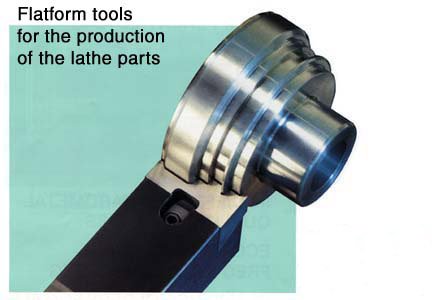
정밀도 및 정확성: 폼 툴은 한 번의 패스로 특정 모양을 만들 수 있도록 설계되었습니다. 이는 공구의 모양이 공작물의 프로파일과 직접적으로 연관되므로 생산된 부품의 높은 정밀도와 정확성을 보장합니다.
생산 속도 향상: 성형 공구는 한 번의 패스로 공작물을 성형할 수 있으므로 여러 공구 또는 패스를 사용할 때보다 가공 시간이 크게 단축됩니다. 이러한 효율성은 시간 절약이 곧 처리량 증가로 직결되는 대량 생산 작업에서 매우 중요합니다.
일관성 및 재현성: 각 패스마다 균일한 형상을 생성할 수 있는 성형 툴은 높은 일관성과 반복성이 필요한 작업에 이상적입니다. 이는 부품이 엄격한 사양과 품질 표준을 준수해야 하는 산업에서 특히 중요합니다.
도구 변경 횟수 감소: 폼 툴은 한 번에 원하는 형상을 구현함으로써 툴 교체 필요성을 최소화합니다. 이는 생산 공정의 속도를 높일 뿐만 아니라 기계의 마모를 줄이고 공구 교체로 인한 가동 중단 시간을 줄여줍니다.
다용도성: 폼 툴은 다양한 모양과 프로파일을 생성하도록 맞춤 제작할 수 있습니다. 이러한 다용도성 덕분에 다양한 가공 작업과 재료에 맞게 조정할 수 있어 맞춤형 또는 특수 제조 작업에 매우 유용합니다.
향상된 표면 마감: 성형 공구의 단일 패스 절삭 작업은 종종 우수한 표면 마감으로 이어져 후속 마감 공정의 필요성을 줄이거나 없애줍니다. 따라서 시간과 비용을 더욱 절약할 수 있습니다.
사용 편의성: 폼 툴은 특수한 특성에도 불구하고 간단한 조작이 가능하도록 설계되었습니다. 한 번 설정하면 지속적인 조정 없이도 원하는 모양을 만들 수 있어 사용자 친화적이며 작업자의 실수 가능성을 줄여줍니다.
비용 효율성: 맞춤형 금형 공구에 대한 초기 투자 비용은 표준 공구보다 높을 수 있지만, 효율성 향상, 가동 중단 시간 감소, 인건비 절감으로 인해 장기적으로 비용을 절감할 수 있는 경우가 많습니다. 따라서 많은 가공 작업에서 비용 효율적인 선택이 될 수 있습니다.
선반 양식 도구 적용
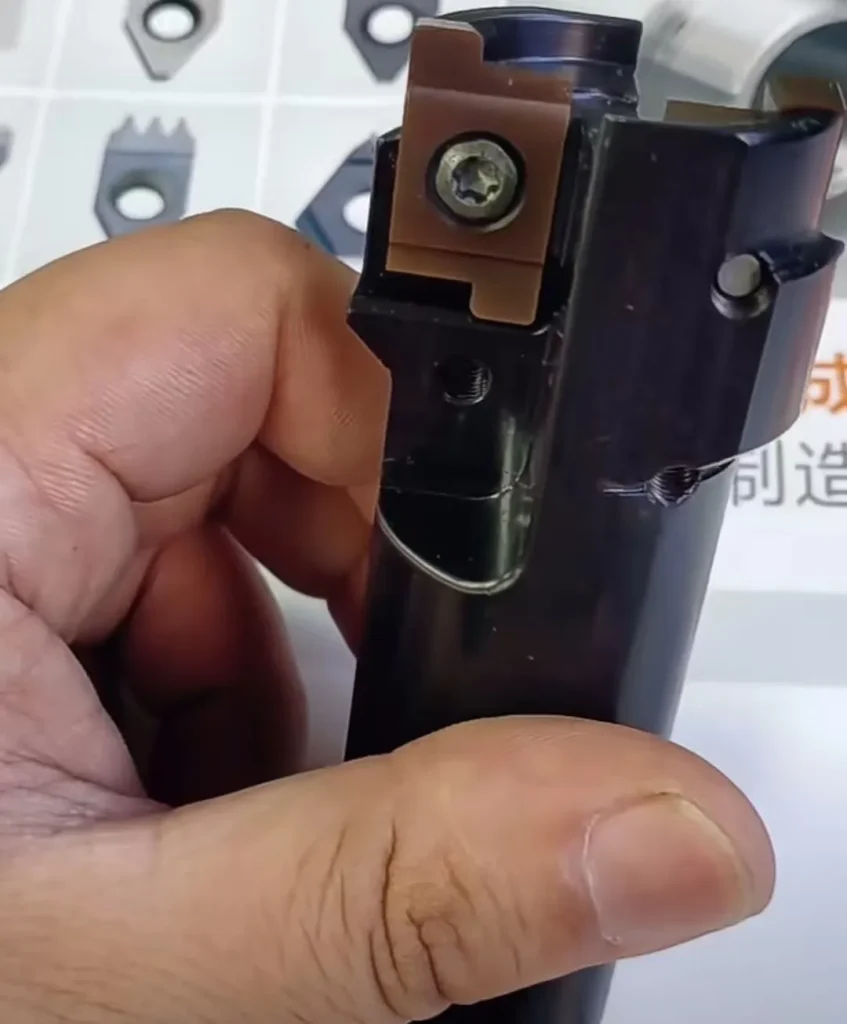
양식 도구 는 복잡한 모양과 프로파일을 정밀하게 생성하는 고유한 기능으로 인해 다양한 제조 및 가공 작업에서 필수적입니다. 다양한 산업 분야에 적용되어 일반 및 전문 가공 작업 모두에 없어서는 안 될 도구입니다. 다음은 폼 툴의 주요 활용 사례입니다:
자동차 산업:
금형 도구는 엔진 부품, 변속기 기어, 샤프트와 같은 정밀 부품을 만드는 데 사용됩니다. 복잡한 형상을 높은 정확도로 제작하는 능력은 자동차 부품의 성능과 신뢰성에 매우 중요합니다.
항공우주 산업:
항공우주 가공에서는 터빈 블레이드, 구조 부품, 랜딩 기어 부품과 같이 공차가 엄격한 부품을 제조하는 데 성형 공구를 사용합니다. 금형 공구의 정밀도와 일관성은 이러한 중요한 부품이 엄격한 항공우주 표준을 충족하도록 보장합니다.
의료 기기 제조:
의료 산업은 정형외과용 임플란트, 수술 도구, 장치 인클로저와 같은 정밀 기구와 임플란트를 제작할 때 성형 공구를 사용합니다. 의료 기기의 기능과 안전성을 위해서는 금형 도구의 높은 수준의 정확도와 마감 처리가 필수적입니다.
도구 및 금형 제작:
금형 도구는 금형 및 금형 산업에서 금형, 금형 및 고정물을 생산하기 위해 광범위하게 사용됩니다. 다른 도구와 부품 생산에 필요한 복잡한 형상과 패턴의 가공을 용이하게 해줍니다.
주얼리 및 시계 제작:
섬세하고 복잡한 디자인을 제작할 수 있는 폼 툴은 주얼리 및 시계 제작 분야에 이상적입니다. 시계 부품부터 복잡한 주얼리 아이템까지 모든 것을 정밀하게 제작하는 데 사용됩니다.
전자 산업:
금형 도구는 커넥터, 방열판, 인클로저와 같은 전자 부품 및 어셈블리를 제조하는 데 중요한 역할을 합니다. 최신 전자제품에 요구되는 높은 정밀도와 소형화를 가능하게 합니다.
일반 기계:
다양한 산업 분야의 기계 및 장비 생산에서 기어, 베어링, 레버 등 특정 형상과 프로파일이 필요한 주요 부품을 가공할 때 금형 공구를 사용합니다.
목공 및 플라스틱:
주로 금속 가공과 관련이 있지만, 금형 도구는 목공 및 플라스틱 가공에서도 비금속 재료의 금형, 패턴 및 복잡한 형상을 제작하는 데 사용됩니다.
맞춤형 제조:
고유하고 특수한 부품이 필요한 맞춤형 제조 작업의 경우, 표준 공구가 달성할 수 없는 특정 가공 요구 사항을 충족하도록 설계 및 활용되는 성형 공구가 있습니다.
결론
양식 도구 는 시간이 많이 걸리던 작업에 효율성, 정밀성, 다용도성을 도입하여 기존 선삭 공정을 크게 향상시킵니다. 단일 패스로 복잡한 형상과 프로파일을 생산할 수 있어 선삭 부품의 생산 속도와 정확성을 크게 향상시킨다는 점이 가장 큰 특징입니다. 이 단일 패스 기능은 여러 도구나 설정의 필요성을 줄여 가공 프로세스를 간소화하고 오류 가능성을 최소화하여 일관되고 고품질의 결과물을 얻을 수 있도록 합니다.
